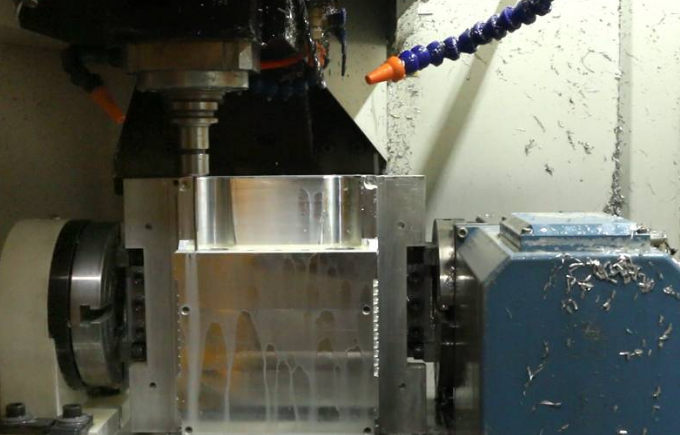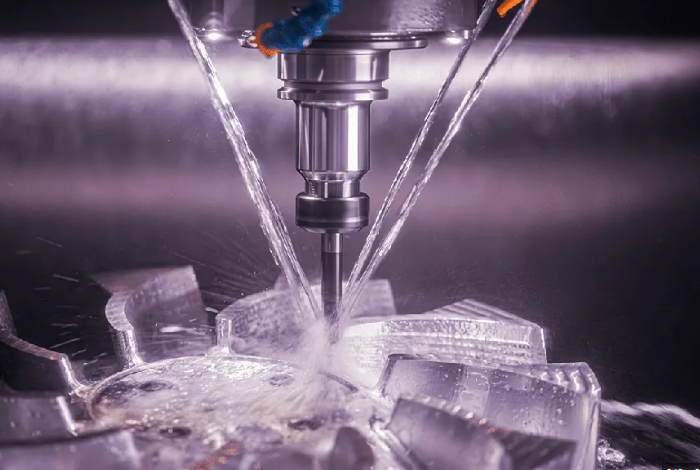CNC machining offers precise tolerances ranging from +/- 0.005 inches to +/- 0.0005 inches, ensuring consistency across production runs. It adeptly handles complex geometries and diverse materials, benefits from automated calibration to maintain accuracy, and significantly reduces human error.
Tight Tolerances
Among the variety of tools used in manufacturing, it is necessary to give CNC machining one of the most important places due to its ability to acquire the most rapid tolerances. Its characteristics are particularly crucial in high-precision applications where parts must fit perfectly. The standard tolerance level for nearly all CNC machining is roughly around, and not more than, +/- 0.005” or 0.127 mm.
Nevertheless, many CNC milling machine manufacturers claim that their devices will provide a distinct advantage if their concerns tolerate such tight restrictions as +/- 0.0005” or 0.0127 mm. One of these advantages is that parts fit perfectly into their assemblies, which especially has to be taken into consideration while manufacturing engines for aerospace or medical devices. I have also noticed this feature in automotive engineering where all parts of the engine must be set in line and fit together exactly.
If to analyze the given example, namely, an automotive engine, the areas of application of such a part as a piston will become clear. It has to fit very precisely in the cylinder, as in the case of even a tiny deviation from the nominal sizes, it will be unable to perform its function leading to the engine failure. By using the tolerance limit of 0.0005”, CNC machines make their devices so accurate that a piston will fit into the cylinder perfectly ensuring the proper work of the engine while significantly extending its service life. In other fields, where such high accuracy is not required, for instance, furniture manufacturing, it can be limited to the standard tolerance of 0.005.”

Consistency and Reproducibility
When it comes to the unique advantages of CNC machining, it is essential to mention the repeatability and reproducibility has to offer. This particular characteristic is particularly important for the industries that deal with high-volume production. The electronics industry can be seen as a great example of the significance of this aspect. Here, even the smallest deviation is capable of leading to the offender of the item, as such, the manufacturers of electronics devices rely on precision machining to ensure that frames are created with a tolerance of up to 0.001 inches or 0.0254 mm.
Thanks to such levels of accuracy, smartphone frames can perfectly fit, for instance, with other integral parts, such as a screen and a battery pack. Consequently, this particular advantage can be tied to the cost-effectiveness of substantial manufacturing. Due to the property of reproducibility, manufacturers can rely on the template that is going to be present as a part of each production process. This aspect allows companies to minimize discrepancies and avoid wasting or needing to recycle the production, as each item will fit the assembly line.
Another example of the use of CNC machining for the production of parts that require high levels of accuracy can be seen in the production of parts for the aerospace industry. Each part needs to be accurately weighed and dimensioned in case of replacement in the future without further aerodynamics alterations and time loss and money for the creation of new models. In that way, turbine blades produced with the help of CNC machining are going to weigh exactly the same, with the same dimensions as blades used in other turbines or engines.
Complex Geometries
Complex geometry may be termed as the main benefit of CNC machining as this process allows creating parts that cannot be fabricated by manual methods or other machining type. In modern industries, particularly in aerospace and automotive, the development of complex-shaped parts is important. In the aerospace industry, it is used to implement the aerodynamic design and reduce the weight of the part, industry parts such as turbine housings with branches or in cars when designing crankshafts. For instance, when developing engines, engineers invent the shapes and curves of camshafts and crankshafts calling to be precisely reproduced to performing according to the previously calculated and drawn design.
In addition, parts should be spiny due to the purpose of their functioning. They use 2-3D drawings to control the 5-axis CNC equipment. Accordingly, complex geometry of parts is one of the benefits of CNC machining. In addition, medical manufacturing is one more sphere where CNC machining with its benefits of complex geometry application is widely used. Surgeons always face a simple fact: human beings are not created equally.
Although this truth, the production of implants on an industrial scale has previously meant that everybody gets the same mesh of metal, plastic, or ceramic to serve as a victim exposure in their bodies. Using 3D modeling and 5-axes CNC machinery producing implant products based on this modeling are now highly customized. Thus, it can be stated that the first benefit of CNC machining is the possibility to develop parts of complex geometry.

Material Versatility
CNC machining is widely known for being able to effectively process any material, and each material, in its turn, can offer certain unique advantages to different industries and applications. It is quite essential because CNC machining is being used in a variety of areas, from aerospace to consumer electronics and beyond, and each of these applications can benefit from the peculiar properties of a wide range of different materials. CNC machines process the metals quite often, with aluminum and titanium being most common. Aluminum’s strength-to-weight ratio is perfect for aerospace parts, which can be machined with CNC to incredibly tight tolerances of +/- 0.0005 inches.
These tolerances are necessary because miscalculation or defects would lead to failure of parts that are responsible for supporting the whole structure of an aircraft. Titanium is much more difficult to machine than steel; however, its strength and resistance to corrosion make it ideal for many structural aircraft parts or parts of various components that have to interact with reactive chemical agents. Plastics are also frequently machined, plastic parts are vital both in medical and electronics industries.
Materials such as PEEK or PVC can be milled by CNC to great precision to make chemically-resistant precise parts. In medicine, plastic parts are important for creating custom prosthetics that would match the exact measurements of a patient giving them increased function, freedom of movement, and comfort. Composites are getting an increasing role, and materials such as carbon fiber are incredibly strong and light. Composites are frequently used in automotive and sporting goods industry, where the weight-to-strength ratio is an important factor, and CNC is used for cutting the elements of, for example, racing vehicles or bicycles.
Automated Calibration
Automated calibration in CNC machining is an essential technology that allows enhancing the accuracy and efficiency of the machining process and extending its longevity. This technology ensures that CNC machines maintain control over their operations and continuously adjust their operation in real-time control, eliminating the possibility of errors caused by wear of the tool or other environmental changes. Automated calibration has many practical applications, such as enabling CNC machines to perform sophisticated and highly-automated tasks without the need for downtime to adjust the programming.
For example, in the automotive industry, production of important components like engine blocks and gearbox casings is intensive and must always be operational. In these cases, automated calibration is used to monitor the condition of the machine and the cutting tool and adjust the precision automatically as necessary. The importance of precision for these components is obvious, as the different parts of engines must fit exactly right to create the needed level of compression, and the shafts of gears must be precise to avoid malfunction.
The process is typically simple, employing sensors to measure the actual performance of the CNC machine and the software to match it with the expected output. When a discrepancy is identified, the computer system simple recalibrates the settings of the machine, ensuring perfect results on an ongoing basis and minimizing the number of defective products.
Reduced Human Error
CNC machining is a process that reduces human error by having the manufacturing process throughout the course of the system controlled through use of computers. Thus, this form of automation can be quite advantageous in industries where high levels of precision and accuracy are required, primarily aerospace and medical device manufacturing. Even minor discrepancies have severe effects in such industry settings. For example, in the case of an aircraft part, a minor manufacturing mistake could spell doom for an entire aircraft for the part will not meet the required standards of accuracy for it to be safely utilized in the assembly of the rest of the aeroplane.
Therefore, the use of CNC machines ensures that each product is manufactured at a high level of accuracy that no manual machining can also determine. This is because computer programmed instructions are used to manufacture a part at exactly the same precise movement that the manual machining technique would take. CNC machining is also very advantageous in this industry setting for it reduces human error significantly. Application of precision and efficient machining technology and techniques reduce the amount of time that workers will have to spend in manually having to correct machines since this will not be required. Fewer manual corrections to the machines mean that the production line can be sped up leading to minimal turn around times.
Ultimately, CNC machines reduce human errors by having the manufacturing process run automatically thus reducing the chances of having defective products in the manufacturing industry. Manufacturing defective medical implants could lead to the need for revision surgeries which are not only time wasting but also costly for the patient involved. This technology ensures that every single manufactured part is accurate the very same down to the last 0.0001 of an inch. Lower levels of waste mean lower manufacturing costs.








